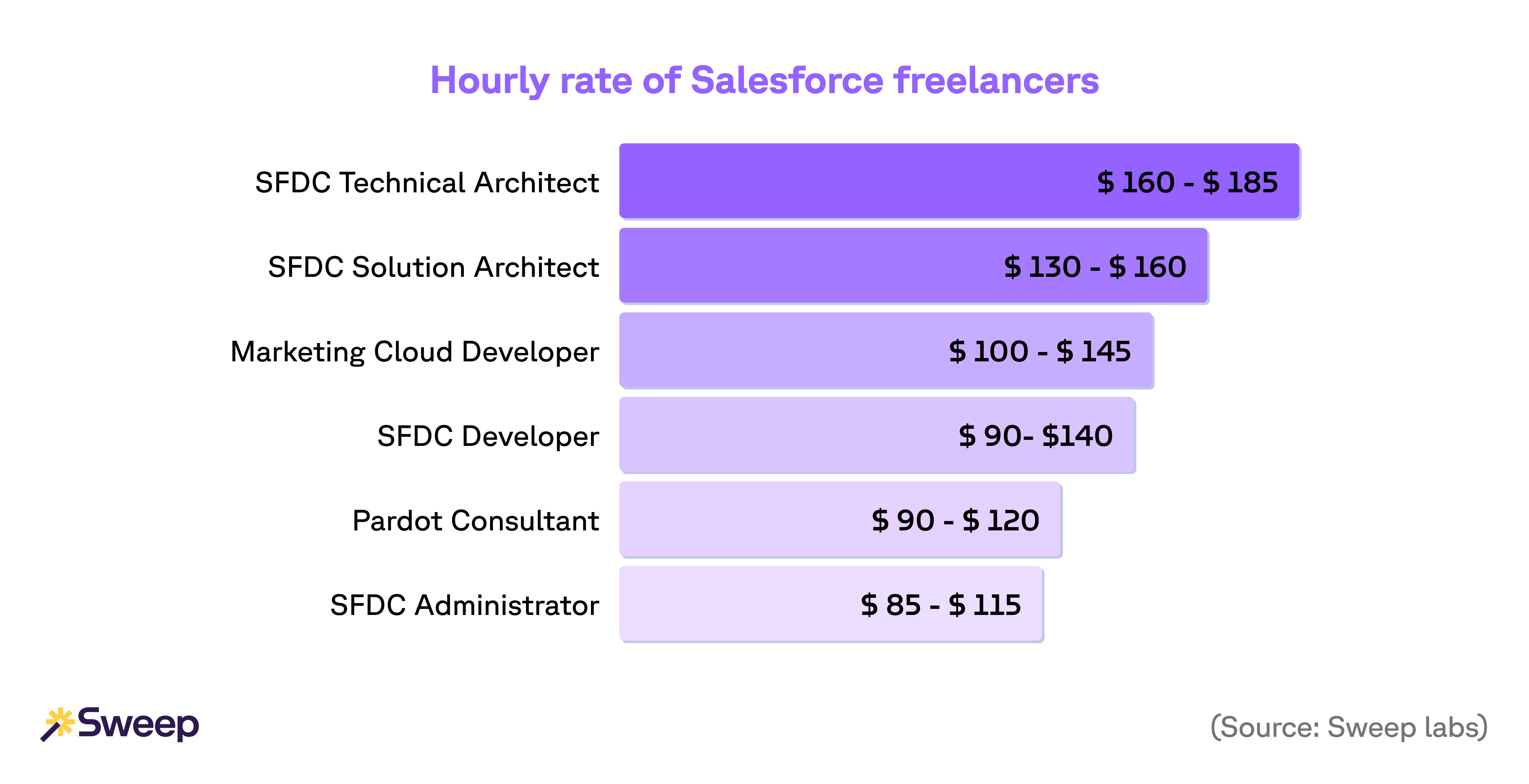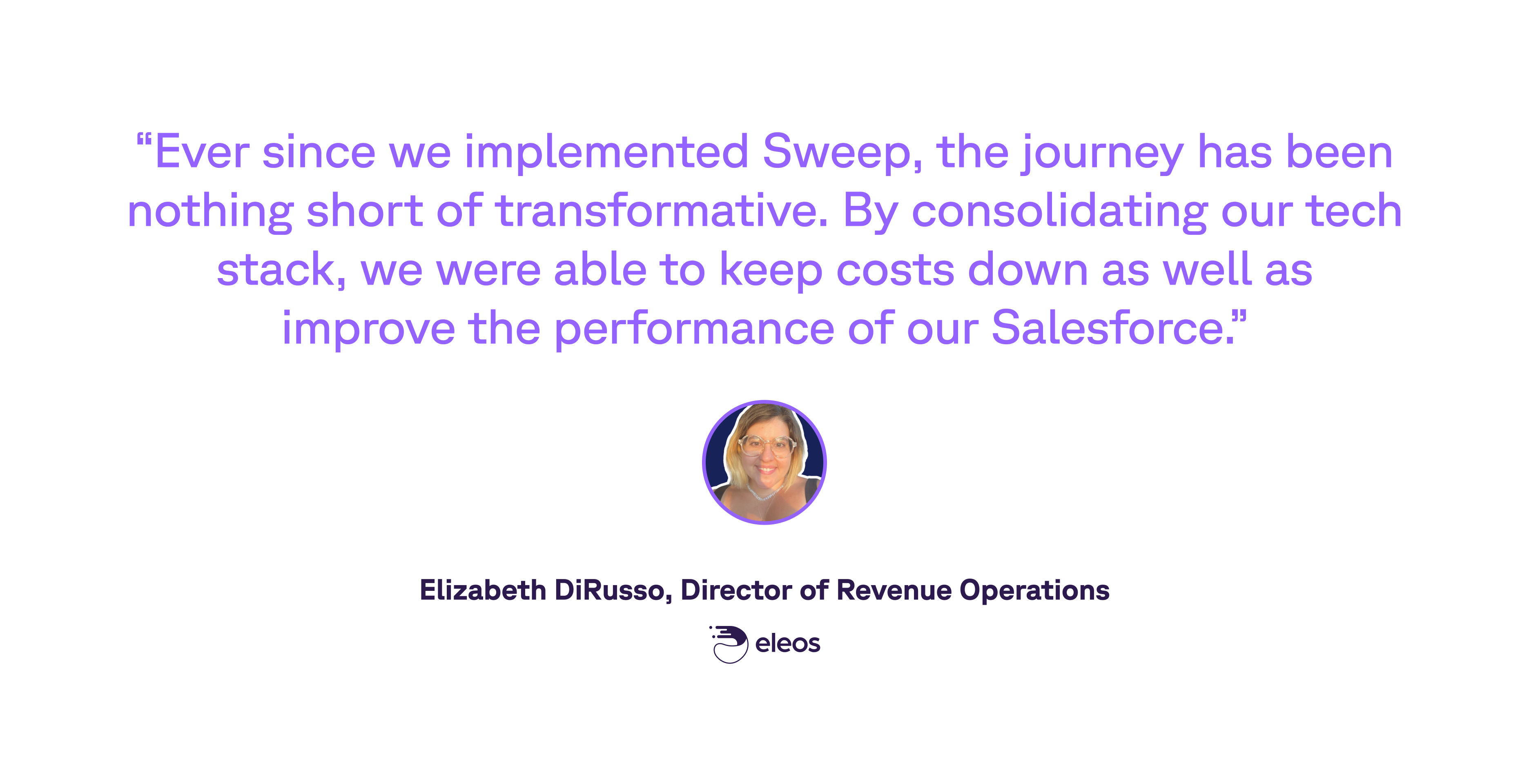
Implementing Salesforce.com for your company is expensive. And the spend doesn’t stop once you’ve paid for the licenses. From training an existing team member to use the platform to hiring a partner to assist with day-to-day management to adding in-house admins, architects, and eventually a fully dedicated Salesforce team, the price tags can seriously add up.
So, how much does Salesforce really cost?
From training an existing team member to use the platform to hiring a partner to assist with day-to-day management to adding in-house admins, architects, and eventually a fully dedicated Salesforce team, the price tags can seriously add up.
In fact, organizations are shown to allocate an additional $6.19 per dollar spent on Salesforce licenses.

Sweep, a no-code visual workspace for Salesforce, was founded to help address this exact problem. At Sweep, we’ve been closely monitoring our customers' spending since we came out of stealth last year. The numbers are clear: companies using Sweep were able to decrease their spend, from an average of $6 per $1 (of Salesforce license) to as low as $2.70. This has resulted in an average decrease of 58%, with reductions as high as 74%.
“Not every company that uses Salesforce is aware of this cost, yet many are looking for solutions to reduce the overall dependency on external consultants and system integrators,” says Ido Gaver, CEO of Sweep. “There is a huge missed opportunity in redefining Salesforce operations; this is where Sweep can help.”
In addition to streamlining processes, Sweep.io enhances reporting and analytics capabilities. This enhancement empowers customers to glean valuable insights while simultaneously refining the data entry and collection processes of their sales teams. The result is a comprehensive solution that not only optimizes workflow efficiency but also transforms data into actionable intelligence for informed decision-making, with a direct impact on bottom line revenue.
Let’s take a closer look at how managing Salesforce could be costing your company more than you need to be spending … and how Sweep can help.
The Salesforce Cost Cycle
If you are trying to calculate the ancillary costs of Salesforce in your organization, it’s important to understand the breakdown. There are three main areas that require additional spending on top of Salesforce licenses:
1. The Hidden Deployment, Customization, and Services Costs
During your sales discussions with Salesforce account executives, they will immediately tell you that pricing does not include implementation and customization. You will likely need to hire a system integrator. While there are thousands of certified consultants on Salesforce AppExchange, freelance service platforms offer tens of thousands of potential vendors, some providing basic implementations for just a few thousand dollars. However, managing Salesforce requires skills, knowledge, and experience. The initial implementation cost may start as "a few thousand dollars" but can easily grow into an annual expense exceeding $100K.

Ongoing services also include special projects, usually priced per project and may involve data migration, training, and other custom development, depending on business needs.
Ron Gura, CEO at Empathy, says, “Sweep has been magical for us. We've slashed our Salesforce management costs by more than half, eliminating the need for outsourcing or consultants. Our team has transformed into productivity ninjas, tackling projects previously budgeted for external help and completing them in-house, ahead of schedule. Salesforce is on steroids – thanks to Sweep, eventually resulting in helping Empathy.com support more families during life’s most challenging moments.”

2. Hiring an Internal Salesforce Team
The question of when to bring on your first Salesforce hire is challenging, especially when cost is a part of the equation (as it should be). Managing Salesforce requires skills, experience, and knowledge. Scaling a business goes hand in hand with scaling your Salesforce, and hiring an internal admin is the first step in building a robust Salesforce team within a few years. This team may include architects, developers, and administrators, with an average yearly salary of $130-150K per hire.

Clearly, adding an entire Salesforce team to your headcount requires major financial resources. While this may not be something you need to do tomorrow, eventually you’ll need to scale your team to match the needs of your growing company. Sweep can help your current team turn into your Salesforce team without adding to the headcount.
3. Build vs. Buy: The Eternal Debate
There are many ways to build a sales tech stack. Some advocate starting with the CRM at the center of your tech stack, while others add tools based on current needs without considering orchestration concerns. In 2024, companies are consolidating their tech stacks to reduce spending. Before this slowdown, there was always someone in the organization questioning the need to buy additional tools after purchasing Salesforce. The simple answer is that Salesforce, with its customization and integration capabilities, can address many needs. However, hundreds of new products have been launched in recent years to address the complexity challenge. The decision to build vs. buy depends on factors like customization, development time, cost, external developers, and additional costs for basic capabilities, such as the $25/user/month cost for Gmail integration to Salesforce.

Salesforce is a powerful engine but can’t address all go-to-market tech demands within the basic license cost. In Sweep, we leverage the native capabilities of Salesforce, allowing our customers to easily deploy capabilities such as lead routing, Slack integration, dedupe and matching, and more.
Elizabeth DiRusso, Director of Revenue Operations at Eleos Health, shares, “Ever since we implemented Sweep, the journey has been nothing short of transformative. By consolidating our tech stack, we were able to keep costs down as well as improve the performance of our Salesforce. Because of how intuitive Sweep’s solution is, we did not have to rely on expensive outsourced-consultants for our implementation, and now our teams are equipped with a tool that not only optimizes processes but empowers individuals to do their best work. This efficiency and self-sufficiency have elevated our output and reduced the need to expand headcount.”

Saving Costs and Increasing Revenue: Lines that Intersect
To ensure sustainability and growth, companies must focus on both cost savings and revenue increase—two factors that go hand in hand.
Increasing efficiency, with the help of Sweep, can save your company money. And save you a headache. With Salesforce, companies often find themselves investing in cleanup projects. Besides being long, expensive, and distracting, these projects often reveal missed opportunities for revenue, in fact revenue leakage as a result of poor tech stack configuration can account for as much as 1%-5% of the gross revenue.
Ready to learn more? Book a demo with one of our team members today.



